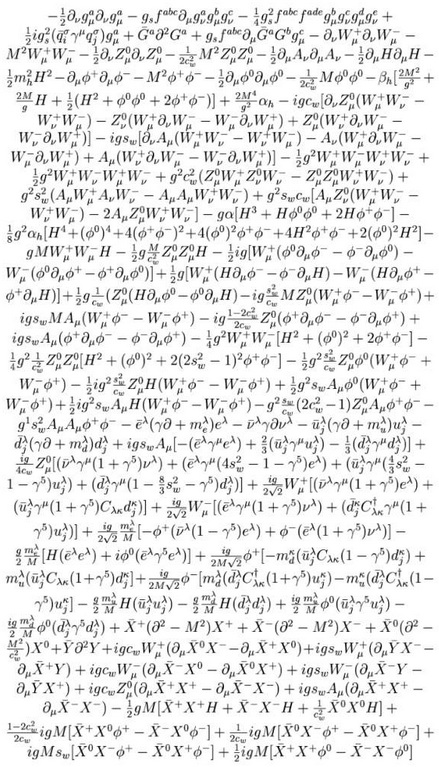It’s funny how some people are so skeptical of science. I know this will not be true of most of my readers, and I’m truly happy about that. Most people I know are quite accepting of the findings of science: things like evolution, cosmology, climate change, and vaccinations. But some are not, and the great satirical piece, What Science is Up To, always gives me a laugh. Go on, watch it; you won’t regret it!
I’m currently reading the book Why does E=mc2? by Brian Cox and Jeff Forshaw, and today I enjoyed a wonderful passage that reminded me of just how beautiful science really is. The second last chapter of the book details the Standard Model of particle physics. After describing the various particles involved in the model, this is what the authors had to say about the famous Higgs boson:
There is a snag to this fantastic picture. No experiment has ever seen a Higgs particle. Every other particle in the Standard Model has been produced in experiments, so the Higgs really is the missing piece in the entire jigsaw. If it does exist as predicted, then the Standard Model will have triumphed again…
Just like all the other particle interactions, the Standard Model specifies exactly how the Higgs particle should manifest itself in experiments. The only thing it doesn’t tell us is how heavy it is, although it does predict that the Higgs mass should lie within a particular range now that we know the masses of the W particle and the top quark. LEP [the Large Electron Positron Collider] could have seen the Higgs if it had been at the lighter end of the predicted range, but since none were seen, we might presume it is too heavy to have been produced at LEP (remember that heavy particles need more energy to produce them, by virtue of E=mc2). At the time of writing, the Tevatron collider at the Fermi National Accelerator Laboratory (Fermilab) near Chicago is hunting for the Higgs, but again it has not to date seen a hint. It is again very possible that the Tevatron has insufficient energy to deliver a clear Higgs signal, although it is very much in the race. The LHC [the Large Hadron Collider] is the highest-energy machine ever built, and it really should settle the question of the Higgs’s existence once and for all because it has enough energy to reach well beyond the upper limits set by the Standard Model. In other words, the LHC will either confirm or break the Standard Model.
Why does E=mc2? Brian Cox and Jeff Forshaw. Da Capo Press. pp212–213. (Emphasis mine.)
The modern reader will no doubt know about the July 2012 discovery of the Higgs boson. But the E=mc2 book was published in 2009, a few years before the vindicating discovery was made. The authors displayed no trace of faith in the existence of the Higgs boson, and nor did they ask their readers to trust them or any other authority as to its existence. They simply explained what the theory predicted, and described some experiments that would make or break this prediction. They were completely willing to abandon or modify the theory if the experiment had not gone according to expectations. This is how science works, and it’s truly beautiful to see it in action!

